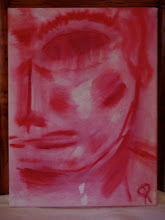
Last night I went to church. I’ll admit, I’m not nearly as devout now as I once was, but I’ve been going to the place off and on for more than 40 years, and I am still impressed by its spectacle and pageantry, and find its rituals familiar and comforting. Mine is one of those mega-churches—typically there are more than 35,000 of us in the stadium-like cathedral. It’s impressive and humbling to be in the middle of a crowd this size gathered together with a common purpose.
Last evening’s service began with a surprise, as three helmeted angels descended into the church from the sky, adorned in battle fatigues, with pink smoke trailing from their army boots, landing on the soft grass of the nave to the amazed cheers of the congregation. What a weird and riveting way to introduce the magic and the mystery of it all!
Generally, though, there are few surprises, and that’s what is so reassuring. The hymns, for example, never change, and always happen at the same point in the service, beginning with “Oh Say Can You See,” that soaring paean to bravery and patriotism, just before the priests enter.
Next, well into the service, comes that lilting call to community, “Take Me Out to the Ballgame,” and then, an “inning” later (we divide our service into nine sections of varying lengths), the love song, “Sweet Caroline.” Until you have stood in the middle of 35,000 parishioners, drunk with adoration, standing, swaying, singing a cappella Neil Diamond’s hypnotic melody, “reaching out, touchin you, touchin me, Sweet Caroline, good times never seemed so good,” you can’t truly grasp the miracle of faith.
Okay, so this is not your stereotypical church. Take communion. We’ve substituted hot dogs and beer for bread and wine, with ample amounts of both, not just a wafer and a sip. We combine communion with the collection; as people approach the front of the long lines to receive their blessing, they give the acolytes a generous, prescribed offering. It’s a good thing we can economize in some places, as the service itself is rather long, generally more than three hours.
We emphasize rituals, but they are unique to our church. The Bouncing of the Beachballs; the Human Wave, in which the crowd participates in a moving display of praise, raising their arms heavenward in a spontaneous, yet choreographed, progression around the perimeter of the church; the prayer-like chants (they’re Latin, I think, or Greek: “lets goh red sochs” and “yan kees suc”); and strange characters like the possessed Kazoo Man, exhorting the crowd in his wild garb, a waist-length white robe with red piping, red strips of handkerchief drooping from either side of his navy hat, resembling a beagle’s floppy ears.
A giant video screen overlooking the church displays helpful insights about the service, as well as the Ten Commandments (Thou Shalt Not Smoke, We Shall Smite Thee if Thee Approach the Altar, Love Thy Neighbor, et cetera). And let’s face it, running a church of this size is not cheap, so its walls are covered with colorful reminders of our sponsors, Saint Gulf, Saint Volvo, Saint John Hancock, among others.
The youthful priests are many, but mute. They communicate with their bodies, from a distance, presenting a kind of visual hieroglyphics that unfolds like a play. It’s often slow and meditative, forcing you to focus on the smallest of acts. At other times the priests run around chasing the chalice, throwing it among themselves, batting at it with a short, thick staff.
There are rules and rituals for the priests, just as there are for us supplicants: chalk lines that, apparently, must be avoided at all costs, chess-like movements around a mystical, green-grass square, and choreographed exchanges at the altar between priests wearing different-colored robes (white or gray, usually, tight fitting to accommodate the motion, topped with a brimmed cap). Four priests in black direct the service, led by one wearing a kind of masked mitre, who plants himself at the head of the altar.
Their meaning is not always clear to the uninitiated, but there’s something universal and deeply satisfying about the priests’ motions. Their movements express what it means to be fully human, alive in a body, muscular, sensual, at once joyful and solemn, hard-working yet playful.
The service is as slow as the revolving earth, interspersed with cosmic bursts of activity, a metaphor for our own struggle with mortality. At its heart, the service evokes our highest aspirations to infuse our lives with passion, to sustain our capacity for joy, to not be defined by the imperatives of survival.
In my religion, you win some, you lose some. When the service is over, I can’t say I completely understand it. But I do know this: religion is not a game.

No comments:
Post a Comment